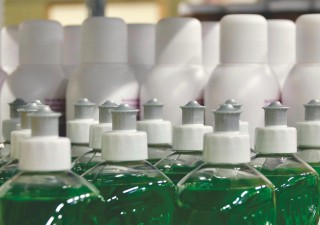Patent on Water Purifier Technology Enforced
09 November 2012

The grant of a patent is premised on the doctrine of quid pro quo. In the statement of the abstract, the patentee has to show that he is the first and true inventor of the invention, upon which he gets the monopoly right. The principle, therefore, is that every simple invention that is claimed, so long as it is something which is novel or new, it would be an invention and the claims and specifications have to be read in that light.
The plaintiff in Mahesh Gupta and Anr. v. Tej Singh Yadav and Anr. obtained a patent on reverse osmosis-based domestic water purifying technology and sold water purifiers in the market under the name of KENT Mineral RO.
The technology, named Mineral RO, entailed a system and apparatus whereby water could be purified and yet essential minerals could be retained.
Upon knowledge of defendants selling the similarly-styled water purifiers, the plaintiff filed an infringement suit in respect of the patent and the copyright in the product manuals, which was also blatantly copied. A compromise was reached where the defendants agreed to not infringe the patent, copyright and trade dress of the plaintiffs.
However, after some time, on further investigation, the plaintiffs again came to know that while the shape of the defendants’ product had been changed, the defendants continued to market their water purifiers by fully and completely adopting and copying their patented technology.
The plaintiffs again filed a suit for infringement of patent and copyright, together with delivery of the infringing materials, rendition of account and damages. The plaintiffs also presented evidence of the popularity of their product through advertisements in print and electronic media as well as sponsorship of sporting events. Due to their immense popularity and goodwill, the plaintiffs iterated that the consumers associated Mineral RO technology with their product and would presume that any other product based on the same technology was either related to or licensed by the plaintiffs.
It was alleged that the defendant’s product completely infringed the claims of the plaintiff’s patent and copied the key features of the invention. The case of Raj Parkash v. Mangat Ram Chowdhry and Ors. was referred to, in which it was pronounced that “the patented article or where there is a process then the process has to be compared with the infringing article or process to find out whether the patent has been infringed.
This is the simplest way and indeed the only sure way to find out whether there is piracy. If the infringing goods are made with the same object in view which is attained by the patented article, then a minor variation does not mean that there is no piracy.”
The court delved into a comparison of the patents and confirmed that the essential features of both patents were the same. Accordingly, the court upheld a case of infringement.
Since the defendants did not put up an appearance in the proceedings, the matter proceeded ex parte. The case was found fit for grant of a permanent injunction by the court owing to infringement of patent and copyright, passing off and unfair competition.
It was noted that the defendants had adopted identical material in their brochure without the plaintiff’s authority and were offering for sale and selling the infringing products in common market, thus making unreasonable profit using the plaintiff’s intellectual property in the water purifiers. This was resulting in unlawful loss and harm to the plaintiff.
A settlement was finally arrived at between the parties by defendants agreeing to pay Rs2.5 million to the plaintiffs and refraining from using their patented technology, copyrights and trade dress.
The main aim of the exclusive rights conferred by a patent is to avoid illegitimate enrichment of someone by using another’s property or, in other words, to ensure that the patentee benefits from his invention and is able to recover the investments made in research and development.
The innovation generated through the grant of patent is the stimuli to further research, a raw material for knowledge production process, and should be available for further experimentation to enable scientific and technological progress.
LEX ORBIS Intellectual Property Practice
709/710, Tolstoy House, 15-17,
Tolstoy Marg, New Delhi - 110 001, India
T: +91 11 2371 6565
F: +91 11 2371 6556
E: mail@lexorbis.com
W: www.lexorbis.com






